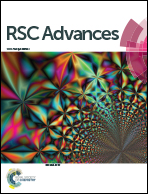Fabrication and characterization of silk fibroin/chitosan/Nano γ-alumina composite scaffolds for tissue engineering applications
Abstract
A series of silk fibroin/chitosan/Nano γ-alumina composite scaffolds have been prepared using the lyophilization technique for tissue engineering. These were then characterized using SEM, XRD, EDX, FTIR and TGA. In addition, the water uptake capacity, degradability, and biomineralization capability of the composite scaffolds were assessed. The inclusion of γ-alumina in the SF/CS γ-alumina scaffolds was found to result in increased compressive strength and water uptake capacity and decreased porosity. Cytocompatibility of the scaffolds was also assessed by an MTT assay and cell attachment studies using Human Gingival Fibroblast cells (HGF, NCBI: C-131). The results showed no signs of toxicity and the cells were found to attach to the pore walls within the scaffolds. These results proposed that the developed composite scaffolds meet the requirements for tissue engineering applications.


 Please wait while we load your content...
Please wait while we load your content...